#industrial ethernet switch
Explore tagged Tumblr posts
Text
Phoenix Contact Industrial Ethernet Switch (Features)
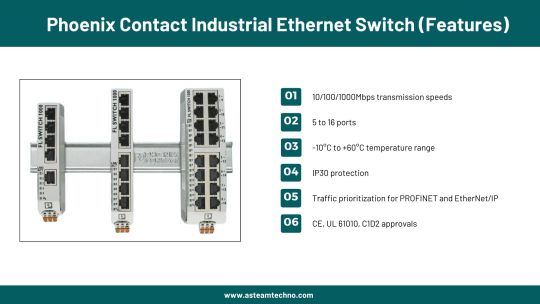
Rugged construction
Fast Ethernet and Gigabit Speeds
Power over Ethernet (PoE)
Quality of Service (QoS)
Network Redundancy
Security Features
Wide operating temperature range
DIN rail mounting
🌐Website :- https://asteamtechno.com
👉Contact us :- +91 95372 40404
📧Email :- [email protected]
#trending#automation#tumblr trends#viral#bestdeals#viralpost#trendingnow#phoenixcontact#industrial applications#industrial ethernet switch
1 note
·
View note
Text
A site focuses on industrial Ethernet switches.
1 note
·
View note
Text
Enhancing Industrial Automation with High-Performance Allen Bradley Products
Allen-Bradley products have long stood at the forefront of industrial automation technology. Known for delivering reliability, integration flexibility, and high-speed processing, components like the 5069-L330ERMS3, 1734 ie8c, and 1783-SFP100FX are integral to building advanced control systems in manufacturing environments.
Compact and Secure Control: 5069-L330ERMS3
The 5069-L330ERMS3 Compact GuardLogix controller is engineered for applications requiring both high-speed motion control and enhanced safety. Featuring 3 MB of user memory and integrated safety functions, this controller delivers efficient communication and rapid execution rates. Designed to seamlessly fit into the Compact 5000 I/O platform, it ensures optimal performance in both standalone and distributed architectures. Its real strength lies in supporting SIL 3/PLe safety levels, a must-have for industries focused on compliance and worker protection.

Precision Current Input: 1734-IE8C
The 1734-IE8C module provides eight channels of current input in a compact form factor, making it ideal for space-constrained installations. As part of the POINT I/O family, it allows distributed control with minimal wiring and maximum configurability. This module supports 4–20 mA signals, which are widely used in process instrumentation for accurate data capture and signal integrity. It's particularly suited for systems where input scalability and ease of maintenance are critical.
Seamless Fiber Networking: 1783-SFP100FX
High-speed networking is essential in modern industrial setups, and the 1783-SFP100FX fiber transceiver meets that need with 100 Mbps Fast Ethernet capability over fiber optic cables. It offers improved noise immunity and extended communication distances, making it a solid choice for facilities with high EMI or geographically spread-out equipment. Used with Stratix switches, this hot-swappable SFP simplifies network expansion without downtime.

Final Thoughts
From safety controllers to scalable I/O and reliable fiber networking, Allen-Bradley Products like the 5069-L330ERMS3, 1734 ie8c, and 1783-SFP100FX represent smart investments in productivity and uptime. These devices not only improve performance but also bring future-ready flexibility to automation infrastructures.
#automation parts store#rocautomation#compactlogix allen bradley#ethernet module#ethernet port switch#Industrial Products
0 notes
Text
Allen-bradley 1783-hms16T4Cgn Stratix Ethernet Ip Switch - Auto2mation
The Allen-Bradley 1783-HMS16T4CGN Stratix Ethernet IP Switch is a high-performance industrial switch designed to improve network reliability and efficiency in automated systems. With 16 copper ports and 4 combo ports (copper/SFP), it offers flexible connectivity for a wide range of industrial applications. Engineered for harsh environments, this managed switch supports advanced security, real-time data exchange, and easy integration with Ethernet/IP networks. Ideal for smart manufacturing and industrial automation, it ensures seamless communication between devices. Upgrade your network infrastructure with the 1783-HMS16T4CGN for improved control, monitoring, and performance.
#industrial automation#industrial equipment#industrial spare parts#industrial#automation#industrial and marine automation#industrial parts supplier#industrial innovation#automation solutions#Marine Automation#marine equipment#marine spare parts#auto2mation#equipment#automation equipment#industrial automation applications#Manufacturing#Allen-bradley#Switch#Ethernet
0 notes
Text
Understanding IEC 61850-3 Switches: The Backbone of Modern Substation Automation
In the rapidly evolving landscape of power systems, the integration of advanced communication protocols has become paramount. Central to this transformation is the IEC 61850-3 switch, a critical component ensuring reliable and standardized communication within substations. This article delves into the significance, features, and applications of IEC 61850-3 switches in modern substation automation.
The Evolution of Substation Communication
Traditionally, substations relied on proprietary communication protocols, leading to interoperability challenges and increased complexity. The introduction of the IEC 61850 standard revolutionized this domain by providing a unified framework for substation communication. Specifically, IEC 61850-3 addresses the environmental and electromagnetic compatibility requirements for network devices operating in substations.
What is an IEC 61850-3 Switch?
An IEC 61850-3 switch is an industrial-grade Ethernet switch designed to meet the stringent requirements set forth by the IEC 61850-3 standard. These switches ensure robust performance in harsh substation environments, characterized by extreme temperatures, high electromagnetic interference (EMI), and vibration.
Key Features of IEC 61850-3 Switches
Environmental Resilience: Built to withstand temperature variations ranging from -40°C to +85°C, ensuring consistent performance in diverse climates.
Electromagnetic Compatibility (EMC): Designed to operate reliably amidst high levels of EMI commonly found in substations, reducing the risk of communication failures.
Redundancy Protocols: Support for protocols like Parallel Redundancy Protocol (PRP) and High-availability Seamless Redundancy (HSR) ensures zero recovery time in case of network failures, enhancing system reliability.
Time Synchronization: Integration of Precision Time Protocol (PTP) as per IEEE 1588 standards facilitates accurate time stamping, crucial for synchronized operations and event logging.
High Port Density and Speed: Equipped with multiple Gigabit Ethernet ports to accommodate the growing data traffic in modern substations.
Applications in Substation Automation
IEC 61850-3 switches play a pivotal role in various substation automation functions:
Process Bus Communication: Facilitates real-time data exchange between Intelligent Electronic Devices (IEDs) and primary equipment, enabling efficient monitoring and control.
Station Bus Communication: Ensures seamless communication between IEDs and the substation's control center, supporting supervisory control and data acquisition (SCADA) systems.
Integration of Distributed Energy Resources (DERs): Supports the incorporation of renewable energy sources by providing reliable communication pathways, essential for grid stability and management.
Advantages Over Conventional Switches
Unlike standard commercial switches, IEC 61850-3 switches offer:
Enhanced Durability: Engineered to operate reliably in the demanding conditions of substations, reducing maintenance needs and operational downtime.
Standardized Interoperability: Compliance with IEC 61850 ensures seamless integration with devices from various manufacturers, promoting flexibility and scalability in system design.
Improved Network Security: Incorporation of advanced security features to protect against cyber threats, a growing concern in the digitization of power systems.
Conclusion
The deployment of IEC 61850-3 switches is instrumental in achieving efficient, reliable, and secure substation automation. By adhering to international standards, these switches not only enhance operational performance but also pave the way for future advancements in smart grid technologies.
0 notes
Video
youtube
𝐔𝐧𝐥𝐨𝐜𝐤𝐢𝐧𝐠 𝐭𝐡𝐞 𝐅𝐮𝐭𝐮𝐫𝐞 𝐨𝐟 𝐌𝐢𝐥𝐢𝐭𝐚𝐫𝐲 𝐄𝐭𝐡𝐞𝐫𝐧𝐞𝐭 𝐒𝐰𝐢𝐭𝐜𝐡𝐞𝐬: 𝐌𝐚𝐫𝐤𝐞𝐭 𝐓𝐫𝐞𝐧𝐝𝐬 & 𝐈𝐧𝐬𝐢𝐠𝐡𝐭𝐬
𝑮𝒆𝒕 𝒂𝒏 𝒆𝒙𝒄𝒍𝒖𝒔𝒊𝒗𝒆 𝒑𝒓𝒆𝒗𝒊𝒆𝒘 𝒐𝒇 𝒕𝒉𝒆 𝒎𝒂𝒓𝒌𝒆𝒕 𝒊𝒏𝒔𝒊𝒈𝒉𝒕𝒔 𝒘𝒊𝒕𝒉 𝒐𝒖𝒓 𝒇𝒓𝒆𝒆 𝒔𝒂𝒎𝒑𝒍𝒆 𝒓𝒆𝒑𝒐𝒓𝒕. 𝐃𝐨𝐰𝐧𝐥𝐨𝐚𝐝 𝐍𝐨𝐰: https://www.nextmsc.com/military-ethernet-switches-market/request-sample
Explore the growing 𝐌𝐢𝐥𝐢𝐭𝐚𝐫𝐲 𝐄𝐭𝐡𝐞𝐫𝐧𝐞𝐭 𝐒𝐰𝐢𝐭𝐜𝐡𝐞𝐬 𝐌𝐚𝐫𝐤𝐞𝐭 in our latest video!
Discover the key drivers behind the market's expansion, the latest technological advancements, and the leading players shaping the industry.
𝑫𝒊𝒗𝒆 𝒅𝒆𝒆𝒑 𝒊𝒏𝒕𝒐 𝒄𝒐𝒎𝒑𝒓𝒆𝒉𝒆𝒏𝒔𝒊𝒗𝒆 𝒎𝒂𝒓𝒌𝒆𝒕 𝒂𝒏𝒂𝒍𝒚𝒔𝒊𝒔 𝒂𝒏𝒅 𝒇𝒐𝒓𝒆𝒄𝒂𝒔𝒕𝒔 𝒃𝒚 𝒂𝒄𝒄𝒆𝒔𝒔𝒊𝒏𝒈 𝒕𝒉𝒆 𝒇𝒖𝒍𝒍 𝒓𝒆𝒑𝒐𝒓𝒕.𝐀𝐜𝐜𝐞𝐬𝐬 𝐍𝐨𝐰: https://www.nextmsc.com/report/military-ethernet-switches-market
Military Ethernet switches are crucial for robust and secure communication in defense applications, ensuring seamless data transfer in critical situations.
#youtube#military ethernet switches#market research#military technology#market trends#aerospace and defense industry
0 notes
Text
Cisco Managed Switches: Enhancing Network Performance
Explore Cisco managed switches, their benefits, pricing in India, and how Radiant Info Solutions supports businesses as a Cisco partner.

#Cisco switches rugged design#Radiant Info Solutions Cisc#Cisco switches support India#Cisco Layer 3 switches benefits#Cisco Catalyst 2000 series deployment#Cisco industrial Ethernet switches
0 notes
Text
Top 5 Must-Have Accessories for Every Electrical Panel

An electrical panel is the nerve center of any low-voltage power distribution system — responsible for delivering electricity safely and efficiently to various circuits. While the breakers and busbars often take the spotlight, it’s the accessories that enhance functionality, safety, monitoring, and reliability. Whether you’re an OEM, panel builder, or facility manager, equipping your panels with the right accessories can make all the difference.
In this article, we explore the top 5 must-have accessories for every electrical panel, based on industry best practices and real-world applications.
1. Cable Ducts and Trunking Systems
Purpose:
Cable ducts (also called wiring ducts or trunking) are essential for organizing and routing internal panel wiring. They prevent clutter, minimize the risk of short circuits, and make future maintenance more manageable.
Key Benefits:
· Improved safety through wire separation and insulation
· Neat, professional layout that meets electrical standards
· Ease of troubleshooting during inspections or servicing
Common Types:
· Slotted PVC ducts
· Halogen-free wiring ducts (for safety-critical environments)
· Flexible ducts for tight corners
Pro tip: Always select ducts with sufficient space for future cable additions — typically 20–30% free space is recommended.
2. Terminal Blocks and Marking Systems
Purpose:
Terminal blocks serve as connection points between internal and external wiring, ensuring a secure and modular setup. Combined with proper marking systems, they allow clear identification of circuits and functions.
Key Benefits:
· Safe and reliable wire termination
· Clear labeling for faster diagnostics
· Scalable for expansions and upgrades
Essential Variants:
· Feed-through terminal blocks
· Grounding terminals
· Fuse terminal blocks
· DIN-rail mounted marking strips or markers
Tip: Use color-coded terminals and labels according to IEC or local wiring codes for better clarity.
3. Panel Meters and Monitoring Devices
Purpose:
Modern electrical panels are not just passive distribution points — they are smart monitoring stations. Panel meters and current monitoring devices help track voltage, current, frequency, and power consumption.
Key Benefits:
· Real-time data for preventive maintenance
· Improved energy efficiency
· Quick response to load imbalance or faults
Popular Options:
· Digital voltmeters and ammeters
· Multi-function energy analyzers
· Load monitoring relays
Advanced choice: Consider smart monitoring units with Modbus or Ethernet communication for integration with BMS or SCADA systems.
4. Control and Signaling Devices
Purpose:
Control and signaling accessories like push buttons, selector switches, and pilot lights are critical for human-machine interaction. They allow operators to control, signal, and monitor operations within or from the front of the panel.
Key Benefits:
· Improved operator control and feedback
· Quick visual status indication
· Enhanced safety through emergency stop functions
Must-Have Components:
· Illuminated push buttons (Start/Stop)
· Pilot lights (for voltage presence or fault status)
· Emergency stop buttons
· Audible buzzers for alerts
Best Practice: Use IP65-rated front-panel devices for industrial environments to ensure durability and resistance to dust and moisture.
5. Surge Protection Devices (SPD)
Purpose:
Electrical surges — whether from lightning or switching operations — can damage panel components or connected equipment. SPDs protect against transient over voltages.
Key Benefits:
· Prevents costly downtime and equipment failure
· Increases the lifespan of electronics and controls
· Meets compliance with IEC 61643 or UL 1449 standards
Selection Tips:
· Choose SPDs according to system voltage (230V/400V) and risk level
· Type 1 for external surge protection, Type 2 for internal panel protection
· Consider combined Type 1+2 for comprehensive safety
Smart move: Pair SPDs with monitoring modules to track surge counts and SPD health.
Final Thoughts
When designing or upgrading your electrical panel, these five accessory categories are not just optional — they’re essential. They improve safety, functionality, compliance, and operational efficiency. Whether you’re building panels for industrial, commercial, or residential applications, investing in high-quality accessories will yield long-term benefits.
At Daleel Trading, we supply trusted low-voltage switchgear accessories from leading brands like Civaux — ensuring your panels are equipped with components that meet international standards.
Ready to upgrade your panel accessories?
Contact us today to learn more about our product range or request a consultation with our technical team.
6 notes
·
View notes
Text
Arista 7050X3 Series
Industry-Leading Performance, Power Efficiency, and High Availability
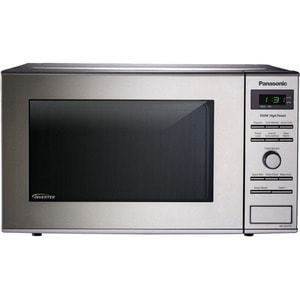
Highly dynamic cloud and enterprise data center networks continue to grow, leading to ever-increasing bandwidth requirements. , the need for high-density 25 and 100 Gigabit Ethernet switching is accelerating. In both areas, the sheet layer and back layer of the network. The Arista 7050X3 is a member of the Arista 7050X series and is a key component of the Arista portfolio of data center switches. The Arista 7050X series is a purpose-built data center switch in a compact, power-efficient form factor that combines wire-speed Layer 2 and Layer 3 functionality with low latency and advanced EOS features for software-defined cloud networking. Masu. When combined with the
Arista DCS, the 7050X3 can be deployed in a variety of open networking solutions, including large-scale Layer 2 and Layer 3 cloud designs, overlay networks, and virtualized or traditional enterprise data center networks.
Introducing the Arista 7050X3 Series
The 7050X3 supports flexible combinations of speeds including 10G, 25G, 40G, and 100G in a compact form factor, allowing customers to adapt to a myriad of different applications and east-west traffic patterns in modern data centers. Allows you to design your network accordingly. It also provides investment protection.
The 7050X3 supports many EOS features already supported by other Arista X-series systems. Consistency of operations and functionality reduces time to certification. Improvements include the addition of single-path VXLAN routing for network segmentation, dynamic load balancing (DLB) for optimized path selection, and network address translation (NAT).
2 notes
·
View notes
Text
[GelecekBT] CLR Networks Gigabit Ethernet Bidi 1-Core Fiber Optik Media Converter Seti [SM , SC Simplex 20km]
#Tek Core Converter#WDM Media Converter#Bidi Gigabit Media Converter#GelecekBT#Gigabit Media Dönüştürücü#Ethernet fiber converter
2 notes
·
View notes
Text
Top 5 Features of 1085256 Industrial Ethernet Switch

Rugged Design and Durability
Advanced Networking Capabilities
Enhanced Security Features
Management and Monitoring
Power over Ethernet (PoE)
🌐Website :- https://asteamtechno.com
👉Contact us :- +91 95372 40404
📧Email :- [email protected]
#automation#trending#tumblr trends#viral#viralpost#bestdeals#trendingnow#phoenixcontact#ethernet switch#industrial ethernet switch
1 note
·
View note
Text
I was referencing the things put forth by OP, in order:
Huge wiring harnesses simplified: Cybertruck Guy and Radmad are both wrong, for different reasons.
Current industry standards don't have separate wires for each individual switch or control, either. They group several switches, lights, etc. that are nearby together, run them into a microcontroller, and put that controller on a vehicle bus. Currently that's usually a CAN (redundant, fault-tolerant) or LIN (neither, but much simpler) bus. This drastically simplifies wiring harnesses.
The main thing Tesla has done is change the DC voltage for that bus from 12 V to 48 V nominal. Since power is voltage times current, and wire thickness is dependent on current, this cuts about half the copper mass out of the power lines in the harness. The other (data) lines were already using smaller wires. The industry has been flirting with a 48V bus for around two decades by now; Tesla just went and did it and dealt with the engineering problems when they popped up. And this is a rare case where "they're a bunch of Silicon Valley nerds" may have helped: datacenters have been using 48V DC for in-rack power delivery for decades, so they had more familiarity with it than Detroit.
They've also adopted single-pair Ethernet (1000base-T1) for the high-speed entertainment data links. This technology has been in the industry since late 2016. It's usually integrated directly onto the custom ICs in ECUs. I remember another thread like this with a tweet where someone was complaining about the fragility of RJ-45 plugs and how that's disqualifying for a vehicle, and he's right, but single-pair Ethernet does not use those jacks; it's integrated into wiring harnesses with everything else.
Astronauts laded on the moon with altitude markers hand etched on the window: That was a backup system dramatized by the Apollo 13 movie. They had an inertial navigation system, like aircraft do, as their primary navigation.
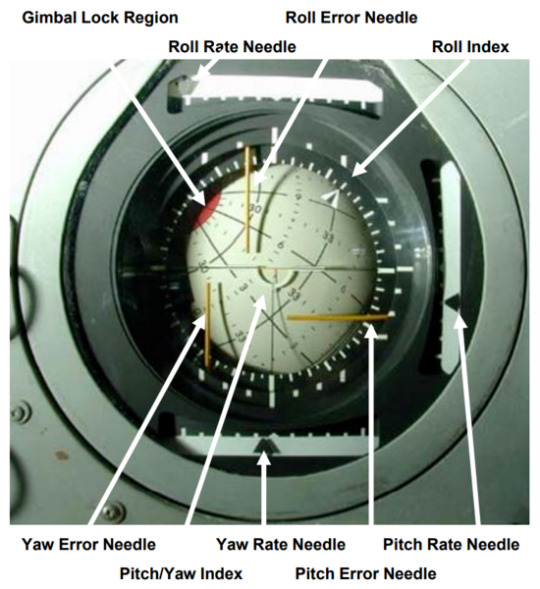
Oh, and it's attitude, not altitude. Very different concepts that folks should not mix up.
Can't get a rocket off the pad without blowing up: Neither could NASA their first few years. Meanwhile SpaceX had 98 successful orbital flights last year, and they can reuse their boosters (the record is 18 times). But that's way off topic.
Tesla Model Y broke: It's not news when non-Teslas lose power steering, apparently. And I've had cars that took many more than three appointments to fix. We can throw around anecdata all day.
Series wiring like Christmas lights: Come on, you've got no basis for that.
It's like the Titan sub: Sigh. Really?
Okay, now to the RDN link:
the vehicle’s angular design and stainless steel body could pose danger to other road users
Absolutely true. Also true of almost every luxury pickup truck on the market. One example:
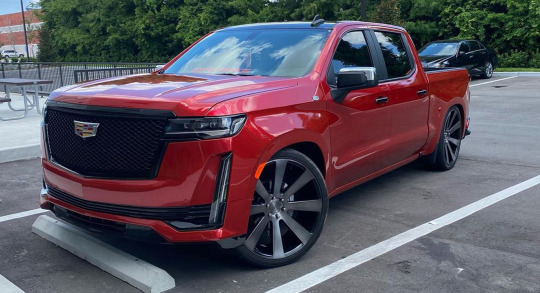
I'm all for figuring out some kind of regulatory regime to rein this in. Or maybe a modification of liability rules and increased insurance coverage minimums.
“The big problem there is if they really make the skin of the vehicle very stiff by using thick stainless steel, then when people hit their heads on it, it’s going to cause more damage to them,”
True, but it's not that thick or stiff; the speaker was speculating. Other have pointed out that "we shot it with a Tommy gun" is a lousy test because the bullets are rather low velocity. If you watch the side impact crash test, you can see the side panels visibly flexing.
And right after that, an IIHS rep said, “IIHS hasn’t evaluated the Cybertruck. The discussions we’ve seen so far appear to be based on speculation. I would add that our experience with Tesla is that they aim for the highest safety ratings in IIHS tests. We have no reason to expect anything different with the Cybertruck.”
The biggest problem with Teslas, from insurance companies' perspectives, has been that airbag-deployed collisions tend to result in totaling the vehicle more often than in other cars. Occupant safety, on the other hand, seems to be better than average. We've seen people walk away from their Model 3s after they got T-boned by speeding pickups (60-ish MPH in a 30 zone). We know this from accident reconstruction and camera data.
There's a linked video in the article comparing the Tesla Cybertruck collision to a Dodge Ram 1500. There are several others like it on YouTube (I saw one that had six trucks in it, all synced up). They all have the same flaw: they're comparing different crash types. The Cybertruck is doing a full frontal crash, where you drive the vehicle into a solid, immovable wall, while the others are moderate overlap crashes, where the hood goes over the obstacle and only the left 1/3 of the vehicle is obstructed, so the engine can deflect to the sides instead of going into the firewall and then the passenger compartment. The Cybertruck, of course, does not have a large engine in that space; it's mostly cargo storage. And we can clearly see it crumpling and the front wheel moving outward instead of back into the passenger compartment, like practically all cars do now.
(Some folks like to point out how the rear wheel breaks away, too: this is expected because it's a steering wheel, since the Cybertruck has four-wheel steering, and uses the same suspension technology as the front, instead of connecting the rear wheels more directly to the rear axle like most vehicles. Not completely directly, though, like the Chevy Corvair's swing axles. In any case, kinetic energy breaking the rear wheels off like that is energy that isn't compromising the cabin.)
The article addresses the "lack" of crumple zones:
Samer Hamdar, a George Washington University auto safety professor, told Reuters that while a lack of crumple zones concerned him, there could be other factors that accounted for it. “There might be a possibility of shock-absorbent mechanism that will limit the fact that you have a limited crumple zone,” Hamdar said.
I'm not going to speculate about crumple zones beyond the above ("the cargo area collapses, taking some energy with it; we have to see if that's enough to call a crumple zone, but it's not nothing") until someone tears one down and documents it. But crumple zones aren't the only means of keeping kinetic energy out of the passengers.
The rest of the article goes back to concerns about pedestrian safety, which seem to be the main substantive concern, and is noted at the end of this video:
youtube
And again, pedestrian safety is an industry-wide problem. We need another Ralph Nader, but demonizing Tesla alone (god it's so easy, Elon is such an asshole) only gives cover to the rest of the industry. And none of the tweets in OP's post spoke of this.

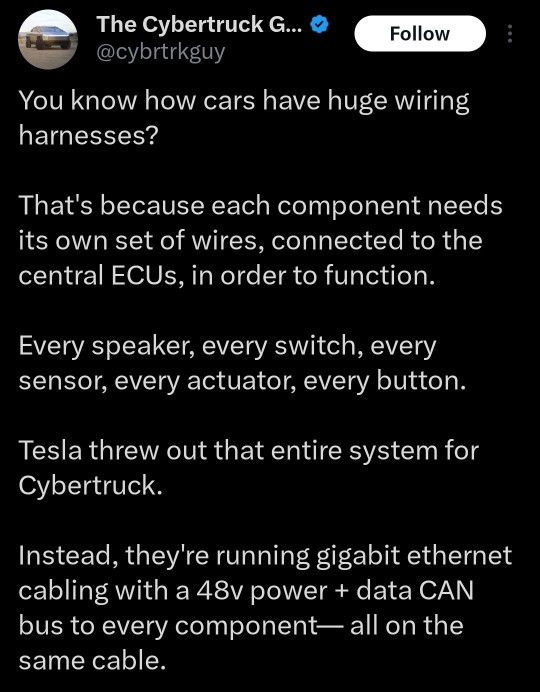


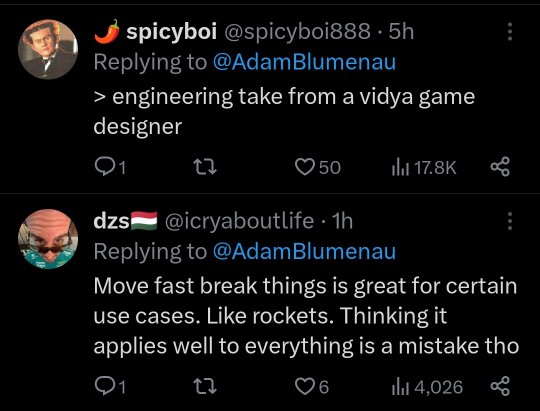



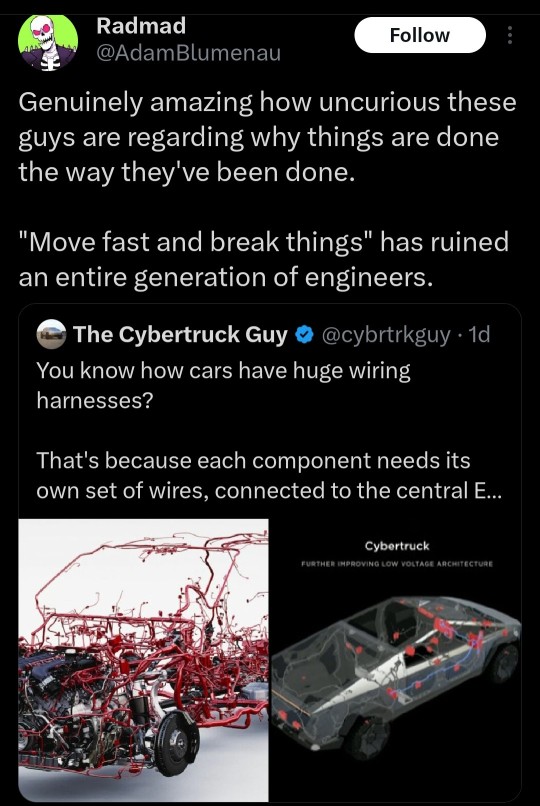
42K notes
·
View notes
Text
Sun Oracle TPM Support & Maintenance
Here's a detailed overview of Sun Oracle TPM (Third-Party Maintenance) Support & Maintenance — a valuable solution for organizations still using legacy Sun Microsystems or Oracle hardware such as Sun Fire servers, SPARC systems, and Oracle storage appliances.
🔧 Sun Oracle TPM Support & Maintenance Guide
Sun Oracle systems are known for their robust architecture, but many models have reached End-of-Life (EOL) and End-of-Support (EOS). Instead of costly OEM contracts or forced upgrades, Third-Party Maintenance (TPM) providers offer extended support to maximize ROI, reduce costs, and maintain performance.
🔹 What Is TPM Support for Sun Oracle Systems?
TPM (Third-Party Maintenance) is non-OEM support provided after Oracle discontinues hardware support. It includes:
📞 Technical helpdesk and remote support
🚚 Replacement parts (SCSI disks, memory, controllers, PSUs)
👨🔧 Onsite engineers and diagnostics
📋 Health checks, firmware, and preventive maintenance
✅ Coverage for EOL/EOS systems (e.g., Sun Fire V490, T4-1, T2000, SPARC T-Series)
🧠 Why Choose TPM for Sun Oracle?
BenefitDescription💸 Cost Savings30–70% cheaper than Oracle support contracts🛠️ EOL Hardware SupportContinue using stable legacy systems past OEM cutoff📦 Custom SLAsChoose NBD, 24×7, or 4-hour response⏳ Extended Asset LifeDelay costly migrations or upgrades📋 Regulatory ComplianceMaintain secure, documented maintenance practices
🖥️ Common Sun/Oracle Equipment Covered by TPM
CategoryModelsServersSun Fire V490/V890, SPARC T3/T4/T5, Netra seriesWorkstationsUltra 5/10, Blade 150/250StorageSun Storage 7000 series, ZFS Storage Appliances, StorEdge 3510/6130Tape LibrariesStorageTek SL500, SL3000, L180NetworkingOracle Ethernet switches, InfiniBand gear
🔍 Typical TPM Services Offered
ServiceDetails✅ 24×7 Support DeskPhone/email support for hardware diagnostics🚚 Parts ReplacementCertified refurbished components shipped to site👨🔧 Onsite Field EngineersHardware troubleshooting and installation🔁 Firmware / Microcode UpdatesWhere applicable, to maintain system health📈 Proactive MonitoringOptional alerts and reporting tools
📅 Ideal When:
You’re using legacy SPARC/Solaris servers in production or backup environments
OEM support is too expensive or discontinued
Your system still performs well and doesn’t justify upgrade costs
You need compliance-ready maintenance without vendor lock-in
🏢 Recommended TPM Providers (Global & India)
ProviderCoveragePark Place TechnologiesGlobal Sun/Oracle support leaderService ExpressCustomized Oracle support plansCurvature (A Park Place Company)SPARC, Netra, and Oracle storage TPMSmart AMC / InRent / Cache Technologies (India)Sun/Oracle TPM within IndiaSMS InfoComm / Axentel / SpectraAsia-Pacific TPM support vendors
📋 What to Look for in a TPM Partner
✔️ Certified Oracle/Sun engineers
✔️ Proven access to authentic Sun/Oracle parts
✔️ Transparent SLAs & flexible contract durations
✔️ Multi-vendor support capability (for hybrid environments)
✔️ ISO-certified support practices (esp. if you're in regulated industries)
💬 Need Help?
Let me know:
The Sun/Oracle model numbers you're running (e.g. T4-1, V240, 7310 ZFS)
Your location and SLA needs (NBD, 24×7, etc.)
If you need AMC, migration help, or hybrid support (cloud + legacy)
I'll help you find the best TPM support option to protect your investment and reduce costs.

0 notes
Text
What is NDI? A Beginner’s Guide to NDI 6.2, IP Video, and the Gear You Need to Get Started
New Post has been published on https://thedigitalinsider.com/what-is-ndi-a-beginners-guide-to-ndi-6-2-ip-video-and-the-gear-you-need-to-get-started/
What is NDI? A Beginner’s Guide to NDI 6.2, IP Video, and the Gear You Need to Get Started
If you’re new to video production or looking to upgrade your workflow, you’ve probably heard about NDI (Network Device Interface). This powerful technology enables high-quality, low-latency video transmission over standard Ethernet networks—no need for expensive cabling or complex infrastructure. In this beginner’s guide, we’ll explain what NDI is, how it works, what’s new in NDI 6.2, and the essential gear you need to start using NDI in your live streaming, broadcast, or video conferencing setup.
youtube
🔍 What is NDI?
NDI is a video-over-IP protocol developed by Vizrt that allows you to send and receive broadcast-quality video and audio over a local area network (LAN) using standard Cat6 Ethernet cables. With NDI, you can also transmit control signals and power over a single cable, making it ideal for streamlining production setups. NDI is widely used across industries including:
House of Worship
Live Events & Broadcast
Business & Corporate Communications
Education & eLearning
Sports & eSports
Government & Healthcare
Radio & DJ Production
🚀 What’s New in NDI 6.2?
The latest version of NDI introduces several powerful upgrades designed for modern IP workflows:
Discovery Tool: Monitor all NDI devices—senders and receivers—in one place
HDCP Support: Transmit HDCP-compliant content securely
HDR & 10-Bit Color: Deliver richer color and better contrast
Embedded WAN Connectivity: Some cameras now have NDI Bridge built in for transmission over wide area networks (WAN)
NDI HX3 Support: Enables HEVC encoding, lower bandwidth usage, and Wi-Fi-compatible PTZ cameras
🛠️ Essential NDI Tools and Equipment
✅ NDI Cameras (PTZ and Box Cameras)
NDI-enabled PTZ cameras simplify your setup with just one cable for power, video, and control. Some even support wireless NDI for ultimate flexibility.
✅ NDI Switchers
Pair your system with NETGEAR M4250 Pro AV switches, which are pre-configured for NDI and Dante workflows. These switches act as the central hub for all your AV-over-IP devices and include support for advanced protocols like ST 2110.
✅ NDI Tools Suite
NDI offers a free suite of software tools that includes screen capture, video monitors, and virtual input—making it easy to get started with multiple devices and sources.
✅ NDI-Compatible Encoders/Decoders
These help bridge non-NDI gear into your NDI workflow, expanding your production capabilities.
💡 Why Choose NDI for Your Production?
Simplified cabling with one cable for everything
Route video to multiple destinations without complex wiring
Easily scale your workflow from small productions to professional broadcasts
Great for remote production with built-in WAN features
Ideal for hybrid events and multi-room streaming setups
🎬 Applications of NDI
NDI is transforming how video is produced and delivered in:
Worship services
Remote learning and classroom streaming
Live sports and eSports events
Corporate webinars and town halls
Government briefings and telehealth
Live radio and music performances
ConclusionWhether you’re streaming services for your church, running a corporate event, or producing a multi-cam broadcast, NDI offers a flexible, scalable, and cost-effective way to elevate your video workflow. With tools like NDI 6.2, NDI HX3, and hardware from trusted brands like NETGEAR and PTZOptics, it’s easier than ever to get started.
Learn more about NDI below:
#amp#applications#audio#box#brands#bridge#Business#cables#Cameras#Capture#classroom#Color#communications#connectivity#content#devices#discovery#easy#education#equipment#esports#event#Events#Features#Gear#Government#Hardware#healthcare#how#hybrid
0 notes
Photo

𝐌𝐢𝐥𝐢𝐭𝐚𝐫𝐲 𝐄𝐭𝐡𝐞𝐫𝐧𝐞𝐭 𝐒𝐰𝐢𝐭𝐜𝐡𝐞𝐬 𝐌𝐚𝐫𝐤𝐞𝐭 𝐅𝐨𝐫𝐞𝐜𝐚𝐬𝐭𝐞𝐝 𝐭𝐨 𝐒𝐮𝐫𝐠𝐞 𝐭𝐨 $𝟒 𝐁𝐢𝐥𝐥𝐢𝐨𝐧 𝐛𝐲 𝟐𝟎𝟑𝟎
𝐒𝐞𝐜𝐮𝐫𝐞 𝐚 𝐅𝐑𝐄𝐄 𝐬𝐚𝐦𝐩𝐥𝐞: https://www.nextmsc.com/military-ethernet-switches-market/request-sample
In an era defined by rapid technological advancements and evolving security threats, military organizations worldwide are increasingly relying on robust communication networks to ensure operational effectiveness and mission success.
According to Next Move Strategy Consulting, the Military Ethernet Switches Market size is predicted to reach $𝟒 𝐁𝐢𝐥𝐥𝐢𝐨𝐧 by 2030, with a 𝐂𝐀𝐆𝐑 𝐨𝐟 𝟖%. This growth is fueled by increasing defense budgets, modernization initiatives, and the growing demand for network-centric warfare capabilities.
At the heart of these networks are military ethernet switches, critical components that facilitate secure and reliable data transmission in the most demanding environments.
Leading companies in the military ethernet switches market landscape include Siemens, CISCO SYSTEMS (USA) PTE. LTD., Microsemi Corporation, Curtiss-Wright Corporation, and others. Emerging trends such as the proliferation of unmanned systems, the adoption of cloud-based services, and the integration of artificial intelligence (AI) and machine learning (ML) technologies are poised to further drive innovation and growth in the military ethernet switches market.
(via Military Ethernet Switches Market Forecasted to Surge to $4 Billion by 2030 | Market Research Reports | Before It's News)
#military ethernet switches market#military technology#defense#aerospace#market research#press release#industry news
0 notes